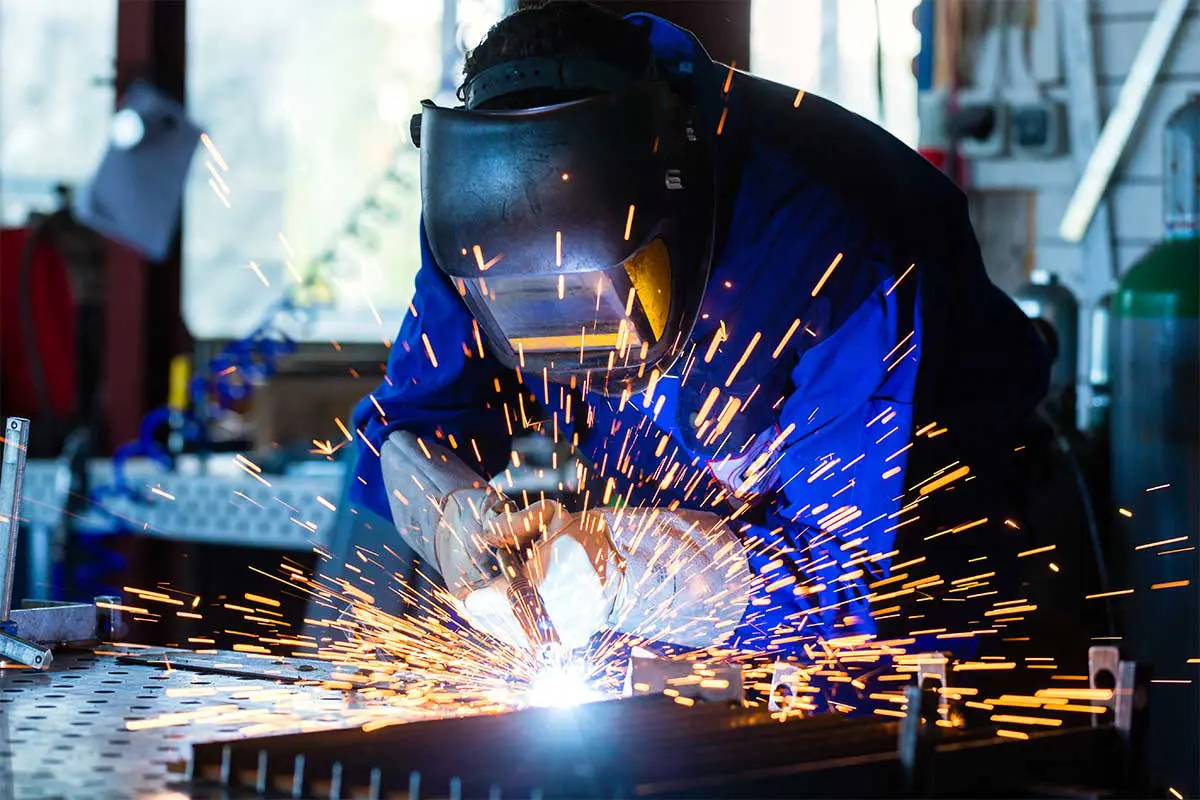We specialize in manufacturing items like butt weld fittings, but many who aren’t familiar with the term may wonder: What is a butt weld, or a butt weld fitting? This information is intended to give some basic guidelines to welding and definition of terms for welding fittings to pipelines. Some terms used commonly are butt welds, fillet welds, weld joints, tensile strengths, stress relieve, welder qualifications, full penetration, partial penetration, and weld procedures.
Butt Welds
What is a butt weld? As the name implies, a butt weld is two pieces butted to one another; they are aligned, they share the same plane. Imagine aligning two sections of pipe end to end; this configuration is called a butt joint. Butt joints can have end preparation done in a number of ways: They can be square cut, beveled to create a “v” joint, or they may have a curved contour to create what is called a j-joint or u-joint.
Most butt welds are required to be “full penetration” welds. What does this mean? The full thickness of the edge of the joint must be welded from top to bottom. If the pipeline is .500” thick, then the weld will be at least .500” thick. This is accomplished by leaving a gap between the two pieces so the filler metal can go all the way to the bottom of the joint.
It is common practice to examine the integrity of the weld, since most of these welds will need to withstand the pressure of the line pipe. The most common are radiographic (RT) and ultrasonic testing (UT). These two processes can test the full thickness of the weld. Magnetic Particles (MP) and Dye Penetrant testing (PT) can only test the surface or sub-surface for defects.
Butt welds require a more skilled welder to perform.
Fillet Welds
Imagine putting a 2” pipe 90° to the top of a 30” pipe, forming a “T” joint. When you weld the two together, this forms a fillet weld. Generally speaking, fillet welds are not as strong as butt weld joints if the cross-section of the joint is not fully penetrated. Multiple passes may be stacked to form a larger fillet weld. A common use for a fillet weld is welding scraper bars or pig bars into the outlet of a tee. Other common uses for this type of weld are branch pipes to header pipes or reinforcing saddles to branch connections.
Fillet welds can only be tested using magnetic or dye penetrant testing.
Common requirements regardless of joint type
Line, pipe, and weld fittings all have what is called a tensile strength. This strength is measured in pounds per square inch, and it is the value that the steel will ultimately break or fail at. Welding filler metals come in a variety of tensile strengths also. It is desired and required to weld with a filler metal that matches as closely as possible to the tensile strength of the pipe or fitting, whether a butt weld fitting or other type.
Each weld done on a pipe or fitting is required to have a weld procedure. This procedure has the electrical settings that the weld machine must be set to, the position the weld is to be made in, the thickness limitations of the joint, and the type of material that can be welded with this set of directions. The weld procedure would have had tests done using these directions, and this proves that it is adequate to satisfy the different codes and specifications that are required for pipe and fitting welding.
Welders must qualify using these established weld procedures and their welds are tested to insure they have the proper skills to accomplish the desired weld.
It is normally desired to “stress relieve” a weld after it is complete. What does this mean? When the high heat from welding is introduced into a steel, the relatively quick cooling times induce or create stresses in the steel.
Consider if you left a cotton shirt in the dryer and, when you pulled it out, it had all kinds of wrinkles. No matter how hard you try to remove them with your hand, they don’t disappear. If you use a steamer with moist steam and run it over the shirt, the material relaxes and the wrinkles disappear. The same is true for steel. If a weld joint and material close to it is heated up to approximately 1100°, the stresses are relaxed. This is called stress relieving. It is common practice to stress relieve a tee after scraper bars have been installed to relieve the stresses in the outlet of the tee.
We hope you have found this information helpful to your understanding of welding and butt-weld fittings. For more information, pricing, and delivery, call Steel Forgings.


